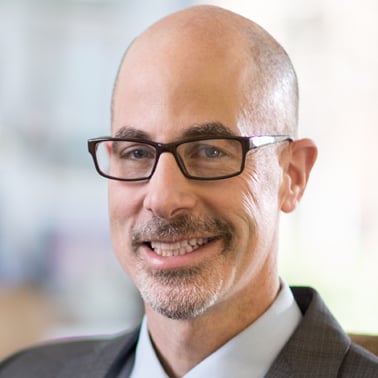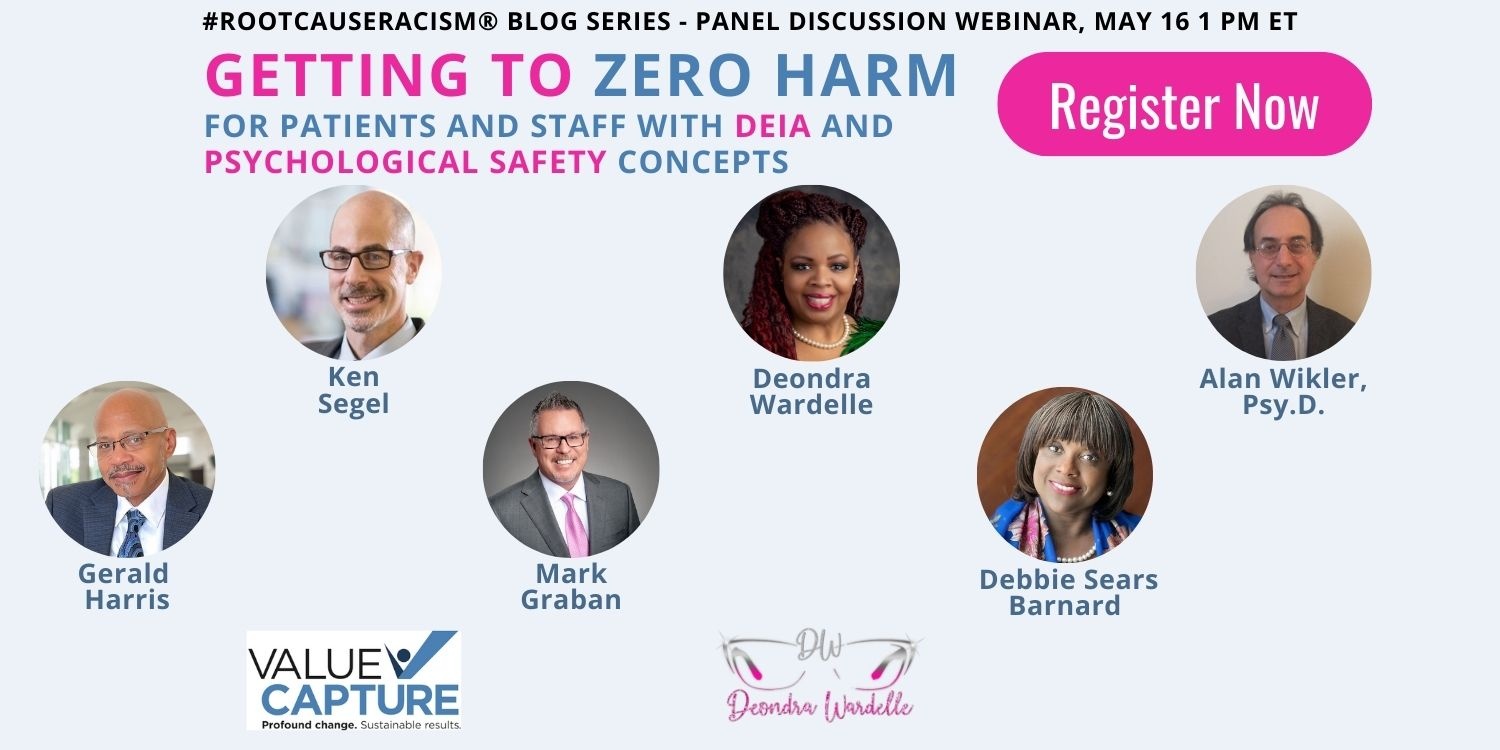This is the sixth and final post in the series, this time written by Value Capture CEO Ken Segel.
In my colleagues’ previous blog posts, leaders wanting to move forward toward equity can find the following:
- the powerful ‘why’ to act in the most personal terms of the stakes,
- the principles to base their course of change upon,
- profound data showing WHY systemic patterns of disparity and dis-equity develop within and across organizations so those causes can be countered, and
- powerful frameworks, skills, and tips to begin closing gaps.
Rather than summarize or repeat those, I want to offer some personal reflection about my own behavior patterns as a leader that I allowed to keep me from acting effectively for important elements of equity. I also want to share observations of related leadership situations in and outside healthcare. My hope is this might help other leaders see and relate to some of the same patterns within themselves and those who they lead, in order to overcome them, as I am trying to do.
I’ll start by just asking for some grace in my choice of words and framings, because I am going to try to not just say things the ‘right way’ to show that I’m a caring person ‘on the right side of things.’ I know my words won’t be perfect. Just know they are not intended to hurt or be off base. I also know that I have a distance to go, and we are still short of our goals.
As Gerald and Mark’s posts indicate, the Shingo principle of “Respect Every Individual” is a true foundation for us. It’s one we have tried to live at a high level for almost 20 years, and Value Capture has long thought of ourselves as helping our clients make profound sustainable changes in performance that made them “more of who they want to be,” including becoming more equitable organizations.
We now know we were falling short of our own self-estimated progress, however, starting within Value Capture, and starting with me.
Internally, we had achieved more diversity than other firms on some important dimensions, but our racial and cultural diversity, in particular, didn’t reflect our community, most of our clients’ communities, or the United States as a nation.
Here’s where my behavior as a leader comes in. One of my partners would regularly point out that achieving diversity in a concrete way required diverse hiring as a foundation. And so when hiring decisions would approach, the goal to be more racially diverse as a team was always ‘on the table.’
Letting Assumptions Undermine Actions, Even the Small Ones that Can End Up Making a Key Difference
Then, the excuse-cycle thinking would start in a “two step” pattern.
The first “step” was to say something like, “We will genuinely try to diversify racially with this next hire, but we worry that there are too few people of color at the elite levels of health system transformation coaching, and those individuals are in such great demand, that we as a small firm may not succeed in meeting our goals with this hire.”
Already I was setting—allowing to be set—an expectation that the odds were stacked against us, based on a set of questionable assumptions.
Then the second “step” of the excuse cycle would hit, one that sounded virtuous. We’d always say something like, “The reason there aren’t very many people of color among these top ranks is surely due to systemic discrimination over time.” Paradoxically, this created a psychological space where we put ourselves ‘on the right side’ but also made it easy to characterize ourselves as a victim of others’ systemic discrimination—THEY would be the reason we likely wouldn’t be successful in recruitment.
And of course, the net impact of these “two steps” of “likelihood of failure” thinking was to let ourselves off the hook before we started ANY action. “We’d like to hire more people of color, and we’ll try … but we aren’t sure we’ll be successful.” And so the actions that we did take, based on that thinking, were WEAK actions … essentially some inconsistent networking. The actions had almost a bias to confirm our own hypothesis about the lack of supply. We took WEAK action, and so we failed.
I failed.
And here’s another painful element to acknowledge. Beyond the words coming out of their mouth, the eyes of the partner who raised issues of racial equity repeatedly communicated that we were likely to fall short, and were falling short. But I never truly listened to those powerful ‘eyes.’
Then, George Floyd was murdered, and we, like others, were shocked to see our ignorance revealed despite our commitment to the principle of respecting every individual. We set out to formally learn from diverse partners, and we decided we would try in a much more serious way to hire diversely.
How much of a shift happened?
It sounds almost embarrassingly small. It amounts to this — we didn’t undermine ourselves with our “two step” excuse making before we even started. Free of those constructs, at our next opportunity, we began active reach outs. We began true networking with the intention to succeed.
Not only did more than qualified candidates of color emerge almost instantly, LEADERS in the field emerged quickly, more than willing to share and connect. Personally, I will never forget the humility that came from taking FIVE MINUTES to consciously seek to begin broadening my network on LinkedIn racially. Immediate potential connections appeared, and within about ten days, my network had been forever enriched. We were able to attract unbelievable talent as staff and consulting partners in our next few searches. (Again I want to say - we are very much still a work in progress here, and our progress isn’t always up).
Behind the story of weakness, and beginning to get through it, trusted advisors in healthcare who use operational excellence principles will recognize a key to success: overcoming assumptions and fear to seek facts and TAKE ACTION in the form of experiments.
- Get the facts,
- try something (experiment), and
- learn.
- Adjust and repeat.
Remarkably fast progress is possible. Before, we’d been undermining our own professional knowledge of what produces change for the better.
Overcoming Fear of Discovering Complicity in Systemic Racism
There’s another factor senior leaders of healthcare organizations have shared with me that may reinforce the same pattern of not taking meaningful action: FEAR.
At one of our major medical system clients, the chief transformation officer told me a powerful story about beginning to confront issues of racial gaps in a variety of outcomes and conditions at the health system. People were fearful of digging into the data to look for differentials of outcome and treatment by race because, among other reasons, they were unsure what they’d do if evidence of bias appeared. They worried that they would feel personally implicated in systemic racism.
A few voiced this to him in a vulnerable way. So, when working in the earliest days of COVID vaccine distribution, he said, “Yes. I, too, am complicit in systemic bias — until this point. Now, I decide to take action; all of us can together, so from this moment forward, we will be moving away from our complicity.” Words were followed by action.
They instantly started to look at the data, EVERY DAY, on vaccine distribution. On Day 1, there was a profound lack of equity in allocation due to, for example, a requirement to have an online account with the health system to sign up for a vaccine appointment. They began to shape rapid experiments to adjust based on other factors they discovered. They checked the data on who was getting the vaccine EVERY DAY, adjusted, and launched new experiments.
Within a week, the equity gap had fully closed. This same health system then used the same rapid experimental cycle to achieve equity in both the process and outcomes of all of their care for COVID patients (the mix of patients who came to them was disproportionately poor and people of color, however).
Making Actions and Continuous Improvement for Equity Habitual, And Reaping the Benefits
The health system leader and their teams were beginning to make systemic improvements to make a HABIT of working toward equity for patients and staff alike. Paul O’Neill taught us that the whole point of leading from values and using the principles was to help individuals and organizations become “habitually excellent.”
I’m struck by the memory of other leaders I’ve observed who took structural steps to make sure that “hearing” diverse voices and continuously improving became the pattern — a habit. For example, we’ve had the privilege of supporting a health system and one education client in Canada. At the education client, we were teaching the executive team about scientific method thinking (“A3 thinking” if you know the Toyota Production System). There, the college had a formal role in the c-suite held by a member of the First Nations.
Regularly, during significant discussions, the college President would turn to this leader and ask, “Is there a teaching or principles from the First Nations peoples that could inform our thinking on this issue?” Often what would emerge was a profoundly different and profoundly helpful lens or offering, one that shifted and deepened perspective without dictating an answer. It was input of the most beautiful, helpful, and impactful kind for a group working on hard and hopeful challenges. One that improves solutions, as my colleagues’ discussions of psychological safety emphasize.
Of course, you have to listen, incorporate, and act to gain the benefit. And, of course, it’s not helpful if the quest for equity is delegated to a particular person or role. But when done right, habitually, the value-add of diversity comes singing through as a gift. It continually makes you humble to what you don’t know or could know about how your fellow humans are processing and moving forward in a common enterprise, and how we need and can better support each other to meet needs more effectively and do better as a result.
As a leader, I’m learning to take the baby steps to move past excuses to take action for the better, and the learnings from our actions are starting to show the way. Other leaders may also have to move themselves and others through fear, or through both excuses and fear, or other barriers that they allow to inhibit more meaningful action. I’ve learned it doesn’t take much to start changing the course.
We are eager to learn from you as well. What can you teach us, if we’ll listen and act?



Submit a comment